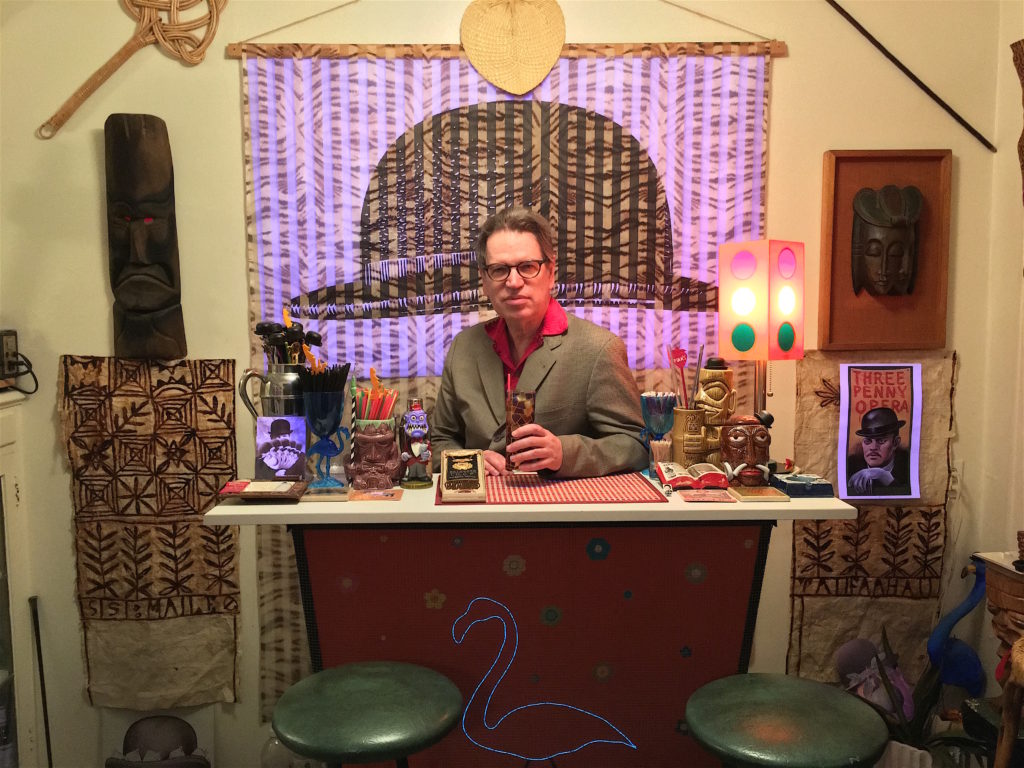
The late ’80s/early ’90s was a great time for music and no, I’m not talking about grunge! There started to be a renewed interest in music from the Mid-Century, music like jazz, swing, exotica, surf, and lounge. It was mostly punk and alternative types that re-discovered all this great music and leather jackets and boots were replaced with suits and skinny ties.
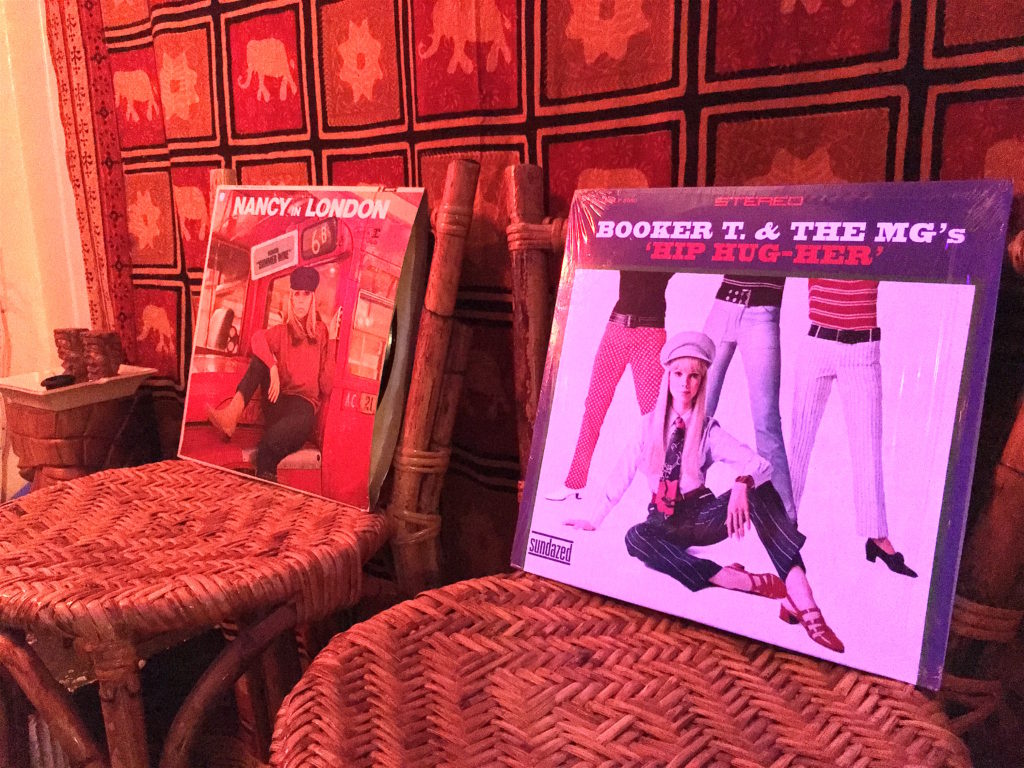
Russell Scheidelman is one of these punks who got turned on to this great music from the ’60s and went head-on into the Seattle lounge scene. Russell is one sharped-dressed man who channels Andy Warhol and John Steed from the Avengers.
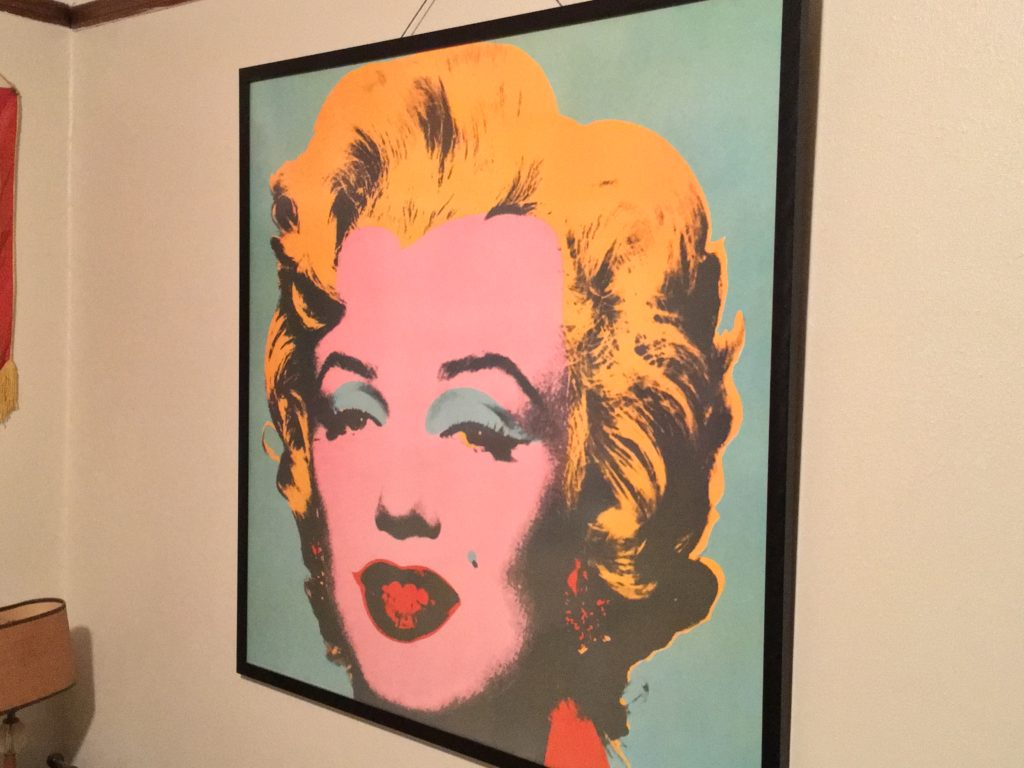
Russell has always liked to host parties at his place. If you’re going have a party, you need a bar. Russell converted the kitchen of his Capitol Hill apartment into the Blue Flamingo and Bowler Hat Club…
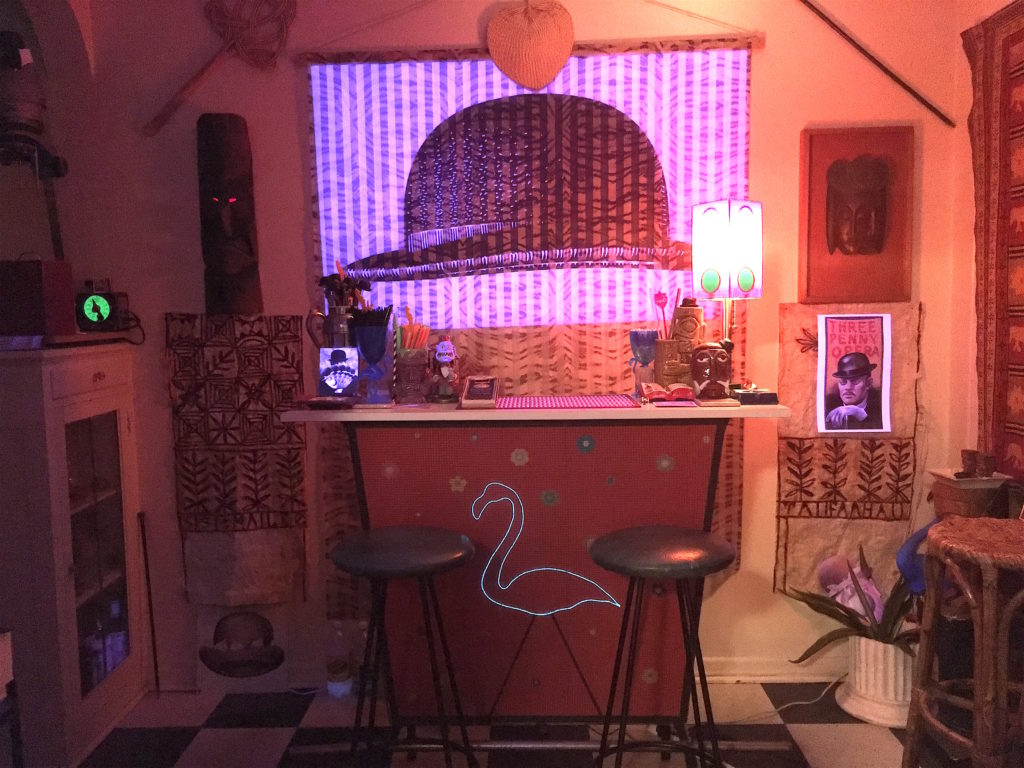
Before there was the bar, you used to host some pretty crazy parties. Care to talk about them?
Russ- My answer to this question could potentially be my longest—because there’s so much to tell!
During the 20-year period between 1990 and 2010, I calculate that I hosted more than 100 parties, most of which were at my apartment living quarters at the time, all of which fall under the broad category of “theme” parties, and none of which fell into the traditional categories of “holiday” or “birthday” parties. (I made it a point never to celebrate my birthday—a habit of mine since the age of 12, by the way.)
The themes varied from those celebrating a particular geographical place, e.g. New York City (my very first theme party), Berlin in the ’20s (I did two of these), the mysterious Middle East (called “Café Maroc”), and various Polynesian-themed Tiki parties, to those celebrating a specific era or cultural trend, e.g. the ’70s, ’60s discotheques, the Beatnik craze, the Belle Epoque (called “The Absinthe-Tasting Party”), and the Future (though approached in the existential sense, as everyone was supposed to be 40 years older).
There were parties based on some element of political history, e.g. “The Communist Party”, “The Kennedys’ Camelot Bash” party), parties based on an article of clothing (e.g., “The Loud Jacket Party”, “The Cape Party”, the inauguration of “The Bowler Hat Club” party), or on broad-based societal themes (e.g., two parties focused on international espionage, also an “Office Party”, and “The Transportation Party”—the latter of which featured a scooter that guests could use to ride around my large apartment), or even on objects bearing some kind of aesthetic value, e.g. “The Statue Party”, and “The Magnetic Attraction Party” (magnets).
(I never did any parties based on animals, by the way—although “The Wild Bistro Party” had on its invitation an accordion bellows through which a lion’s head emerged. Nor did I choose themes with an obvious sex angle, as I didn’t think my set of partygoers needed any added incentives.)
Eventually (in 1993), I created a lounge bar in my apartment with a specific title: “The Blue Flamingo Lounge”, just so I could undercut the repeated speculation by my guests over subsequent “themes”, although a mythical lounge bar in itself constitutes a theme, and some of the “themes” mentioned earlier were simply grafted upon its swank foundations. In putting this together, I tried to hew as closely as possible to the nightclubs I idealized from the Rat Pack era.
In its first location, with its sweeping views of downtown Seattle and the Space Needle, the Blue Flamingo had a doorman, cigarette girls, a bar and bartender, black lights, jungle fabrics, innumerable ashtrays, and its own in-house jazz combo called Les Hammond & The Lushtones. (Les, who played on the club’s Hammond organ, is in real life Tor Midtskog, who now performs in the Seattle pop group The Moonspinners, by the way.) Eventually, both Tor and I put together compilations of lounge music gems on cassette tapes to be purchased (from the cigarette girls) by guests wanting to bring some of the Blue Flamingo experience back home with them. Starting in 1995 (with the assistance of my friend Ray Niolu), the club started publishing an in-house fanzine called “Organ & Bongos”, which focused on the growing lounge scene (both locally and internationally), also with the intention of proselytizing the masses. Party dates were then coordinated with the release dates of the latest issues.
After its seven-year stint at the Biltmore Apartments on Capitol Hill, the Blue Flamingo moved to two other Capitol Hill locations, but the stints at these other apartments were shorter. Somehow though, despite the live or deejayed music, crowds of 30 to 70 people, and staying ‘open’ till 4 or 5 in the morning, this indoor “scene” never drew but a handful of noise complaints (and these usually came from nearby buildings). I tip my hat, most gratefully, to all the tolerant neighbors of those times!
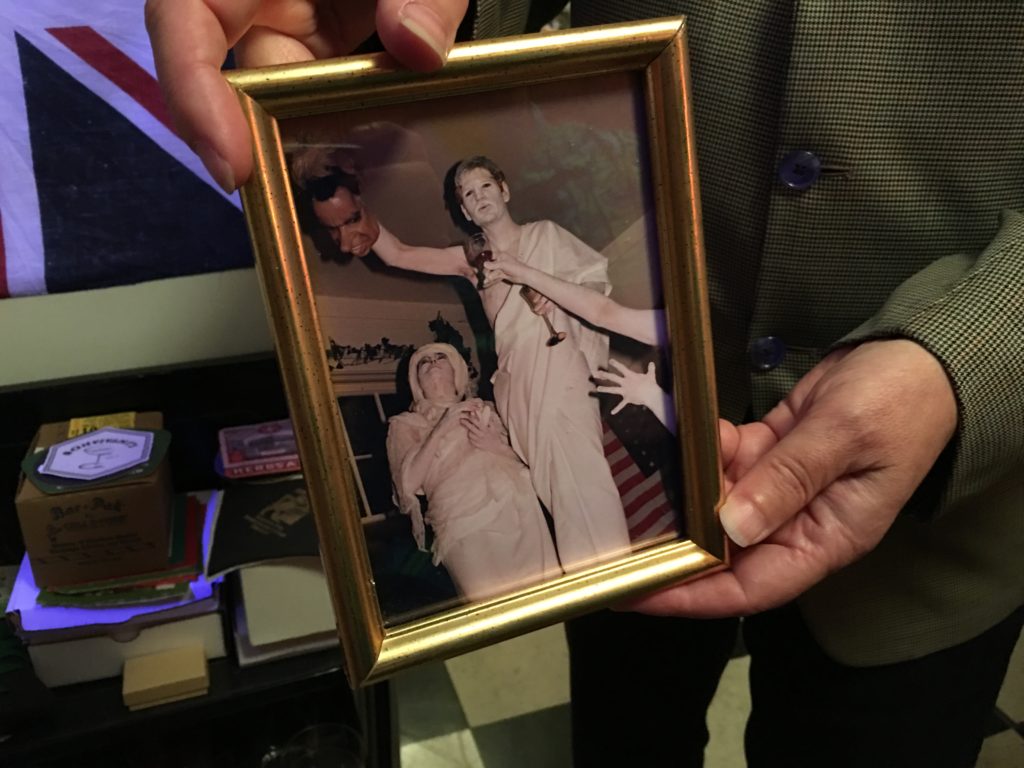
When did you get into the Tiki lifestyle and what got you into it?
Russ- The “Tiki lifestyle” is really just a subset of the “lounge” lifestyle. (The Rat Pack, say, wasn’t really Tiki per se, although the gang liked to hang out at Tiki bars from time to time.) It was in the early ’80s that I started preferring what I’d call “pop jazz” music (Frank Sinatra, Peggy Lee, etc.) over rock music, and then gradually I became more interested in “instrument-only” pop jazz that included Martin Denny and Arthur Lyman (not to mention Percy Faith and Nelson Riddle). It all started congealing with clothing style and drink choices by the early ’90s. What got me into it was my own restless resistance to mainstream trends—and the whole rock scene had ossified into a kind of permanent trend by that time—perhaps with a bit of nostalgia for both the music and clothing styles I had around me as a child (late ’50s/early ’60s).
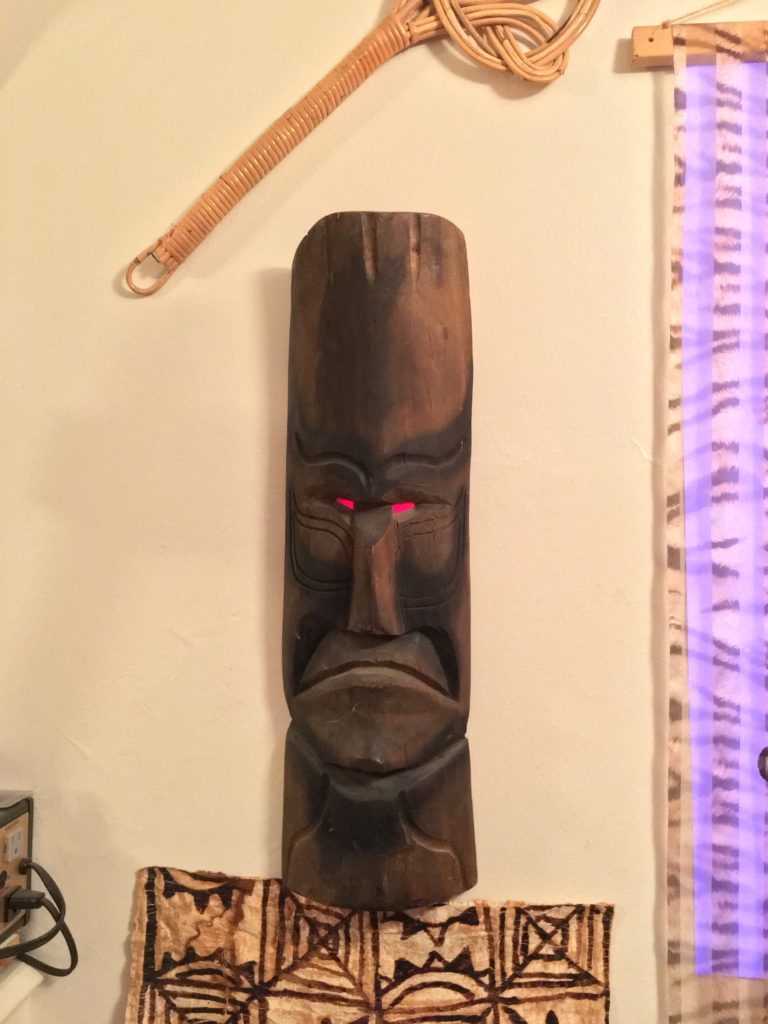
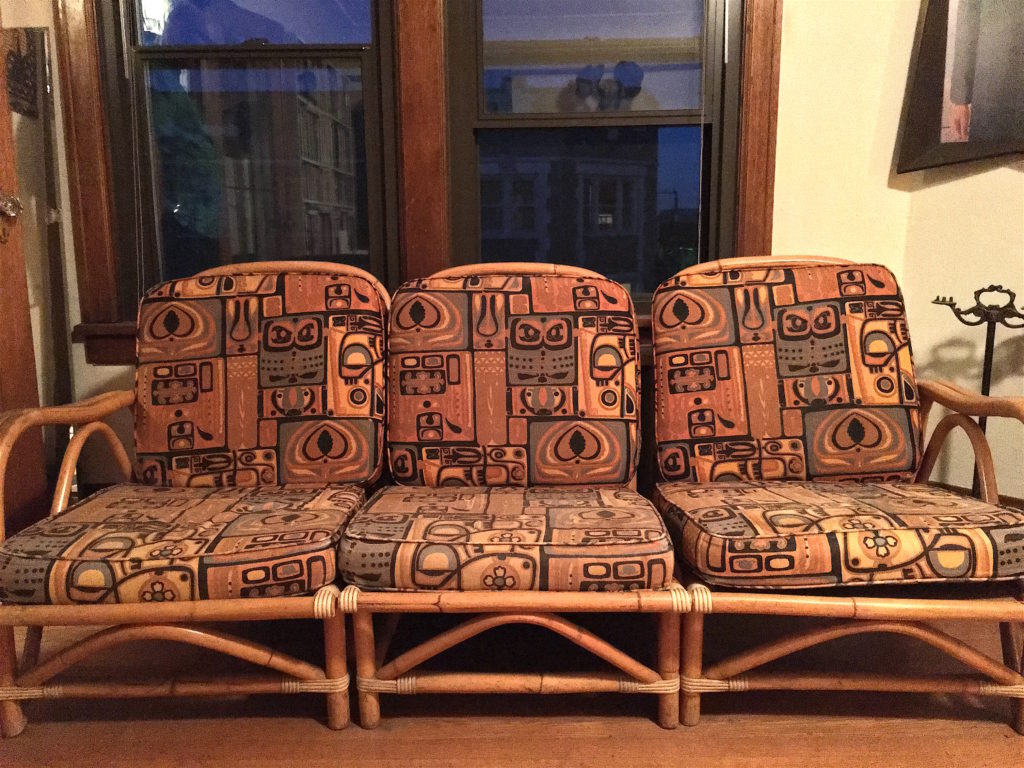
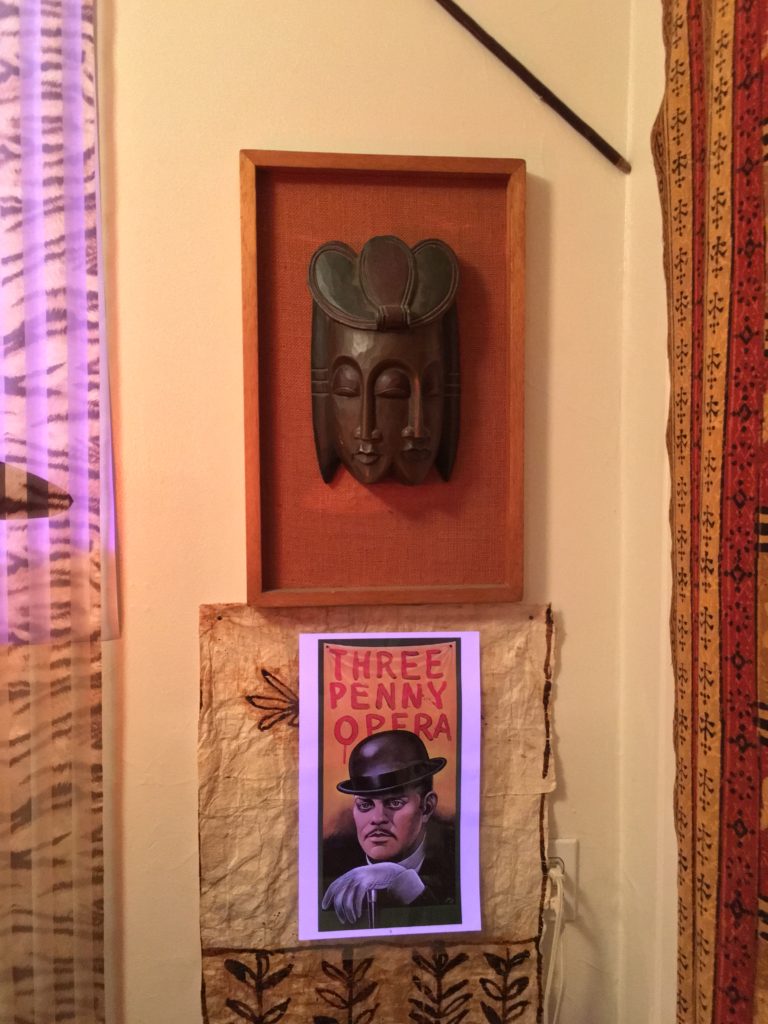
You were into the lounge scene back in the day. What was it like in the early ’90s?
Russ- On the more public level in Seattle, really unlikely places like the COCA art center (run by former punk impresario Larry Reid) and the grunge-oriented MOE club on Capitol Hill were the first to feature lounge-themed events. These gave people a chance to get out of their usual jeans-and-t-shirt attire and to look for new stuff at the thrift stores, and to try different alcoholic beverages besides beer. The music, of course, was a revelation for many, and local DJs like Terence Gunn really began to mine the music bins for unusual material and hone the tastes that affect many of us to this day. I must say that the cocktails imbibed by the lounge set back then were not very sophisticated by today’s standards. Standard well drinks were enough to please our palates.
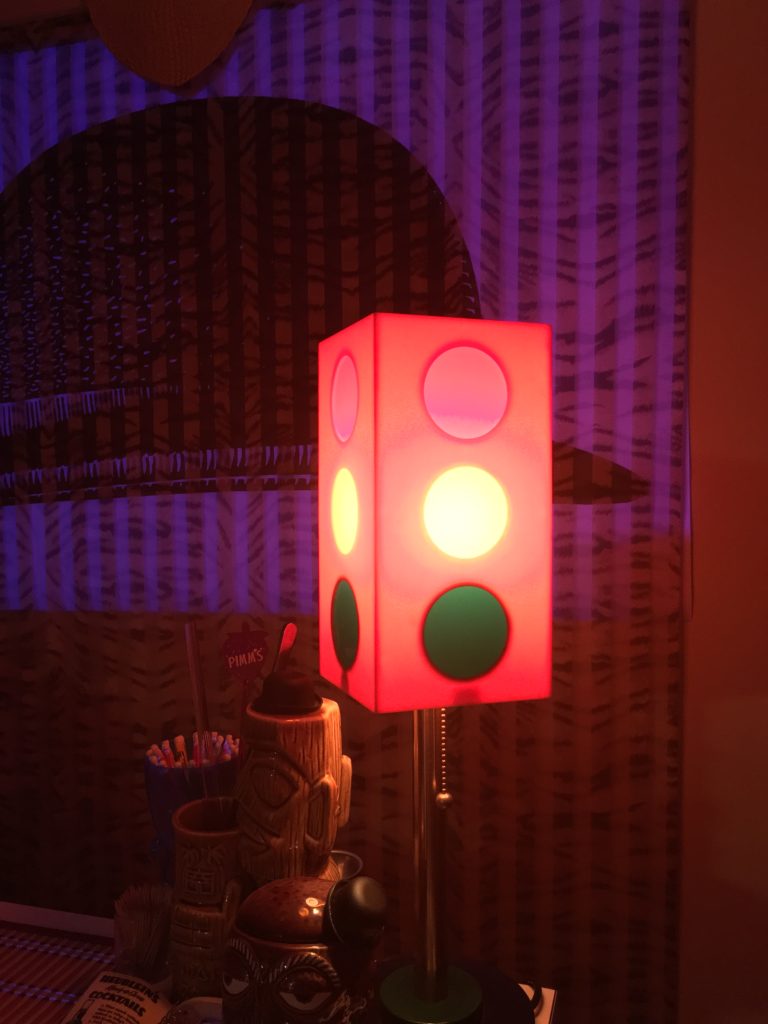
You created your own fanzine “Organs And Bongos”. Could you talk about that?
Russ- The “Organ” in the title is singular—people make that mistake all the time! Culled from an album cover with the same title. It was made on legal-sized paper folded in half. All black-and-white (except that the cover was of a heavier stock with a different color for each issue). It was printed at Kinkos (now owned by FedEx), which stayed open all night back then. It was typical for my friend Ray and I to complete an issue at five in the morning, just prior to having to go to our day jobs just a couple hours later.
So it was a real “labor of love.” No advertisements—of the paying sort, that is. Instead, I riddled it with fake ads of my own devising, with fake companies like “Swankline” (which sold portable bars and asbestos-lined clothing for heavy smokers), “She-Bait Cologne”, and “Mean Spirit” cigarettes (for Republicans). Any money made on the project was either through subscriptions (from as far away as Sweden) or through retail sales. Please note here that the magazines were given away for free at my parties, but that various brick-and-mortar stores (like the now-defunct Tower Records) would stock my magazine on shelves all over the world. So periodically, I’d get some checks in the mail, along with all the promotional freebies that one tends to get as a publisher.
The content—besides the ads—consisted of bar reviews (including, for a while, of home bars, by Mr. Gunn named above), to music—CD—reviews (by Mr. Midtskog), and cocktail recipes (ditto), interviews with various people associated with the lounge scene, a humorous cartoon or two, an on-going fictional tale (“Check Please” by Joe Dolan), and various “special feature” articles, for roughly 30 or 40 pages. The graphics were mostly either hand-drawn or using photographs I shot with a film camera, for which the processing and printing was done by me in my home—kitchen—darkroom.
“Organ & Bongos” lasted for 13 issues over a four-and-a-half year period (1995-1999), never quite achieving the ‘quarterly’ status it proclaimed for itself. But it made for an odd addition to the zine universe of that era.
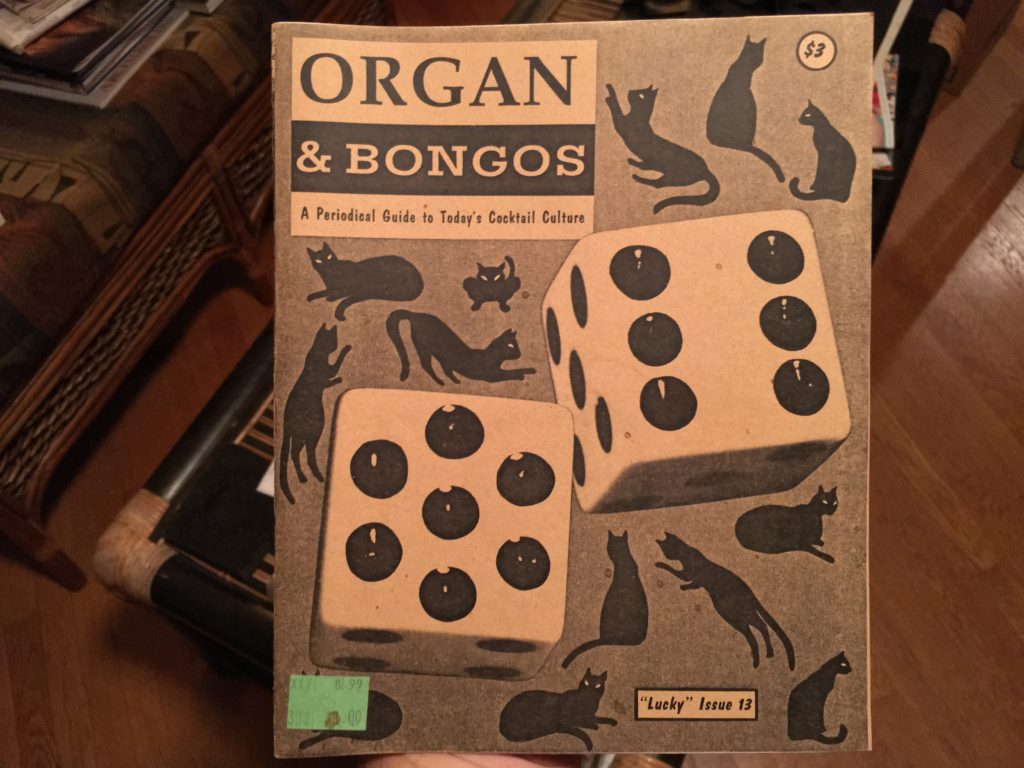
What is your favorite Tiki drink? Why?
Russ- Taking my cue here from lots of other Tiki aficionados, I tend to order a Mai Tai if not immediately inspired by something else. (Since each bar seems to have its own way of making one, the initial experience of a bar’s Mai Tai can help give a sense of what its other drinks may be like.) But being the rebellious type, as mentioned earlier, I often prefer to scan the drink menu for “tropical” drinks that use some other liquor besides rum. Singapore Slings can be nice.
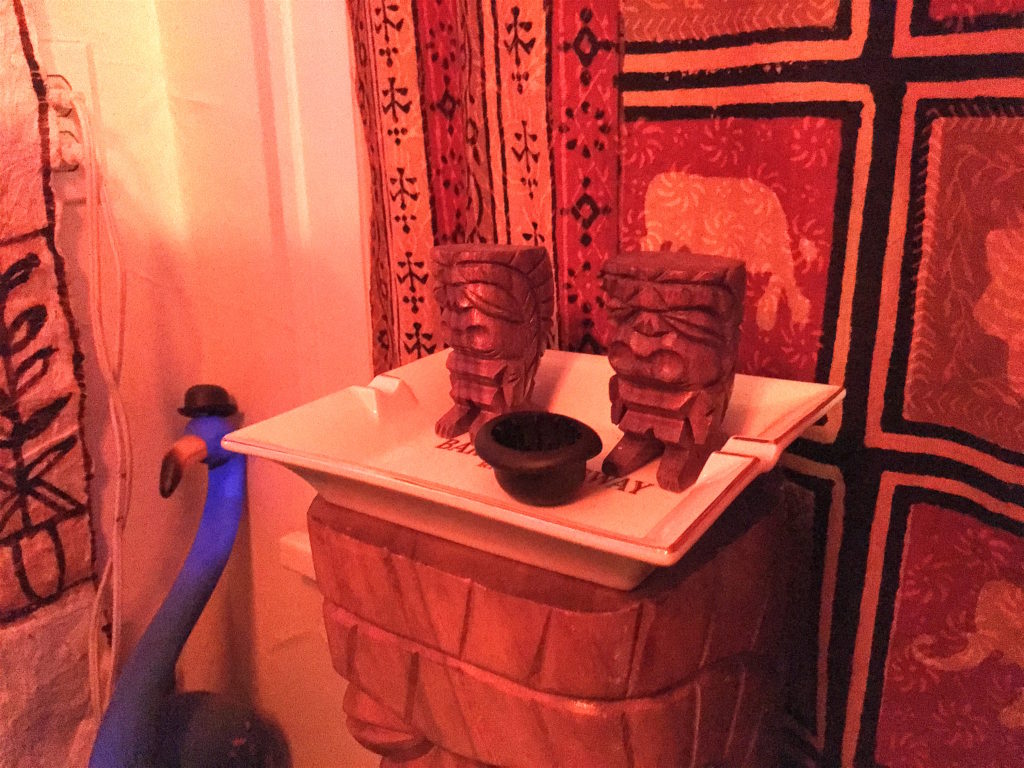
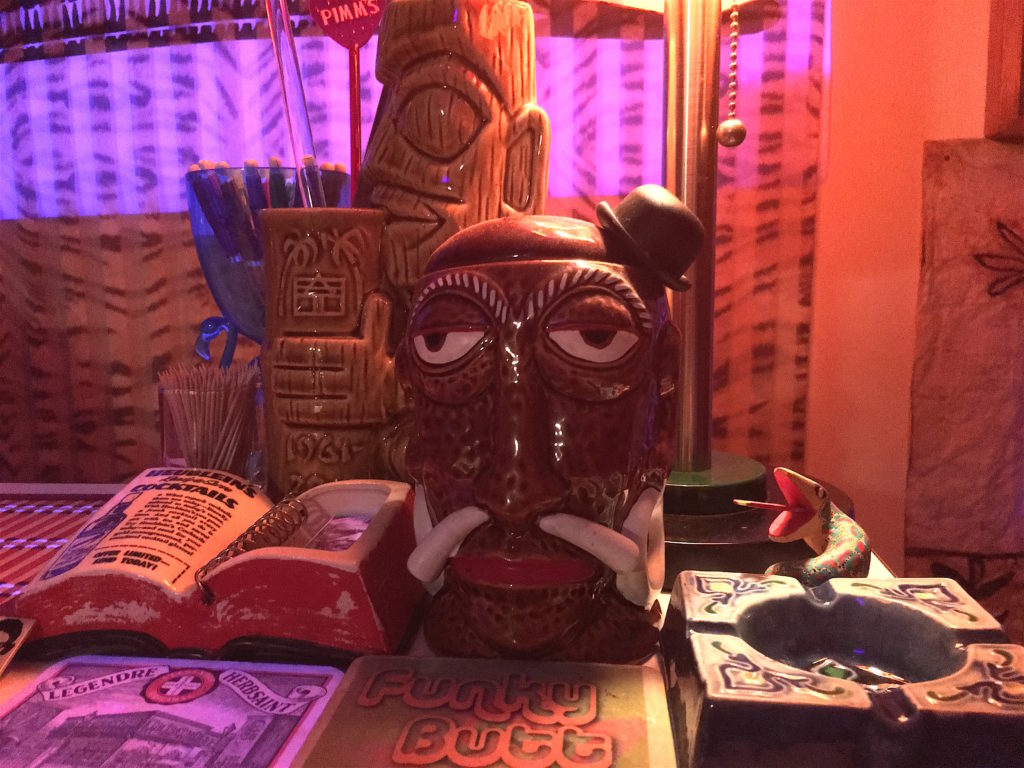
Not including your own, what is your favorite Tiki bar? Why?
Russ- My home bar has Tiki elements, but is too eclectic to be considered a “Tiki bar” per se. Right now, my favorite tropically themed bar in the world is Rum Trader in Berlin. Perhaps my favorite tiki bar per se is Tiki Ti in Los Angeles. Why? They both make great drinks, of course! They seem to break rules by allowing smoking. And they both tend to be operated by their owners, so in that respect, it’s like visiting someone’s home bar.
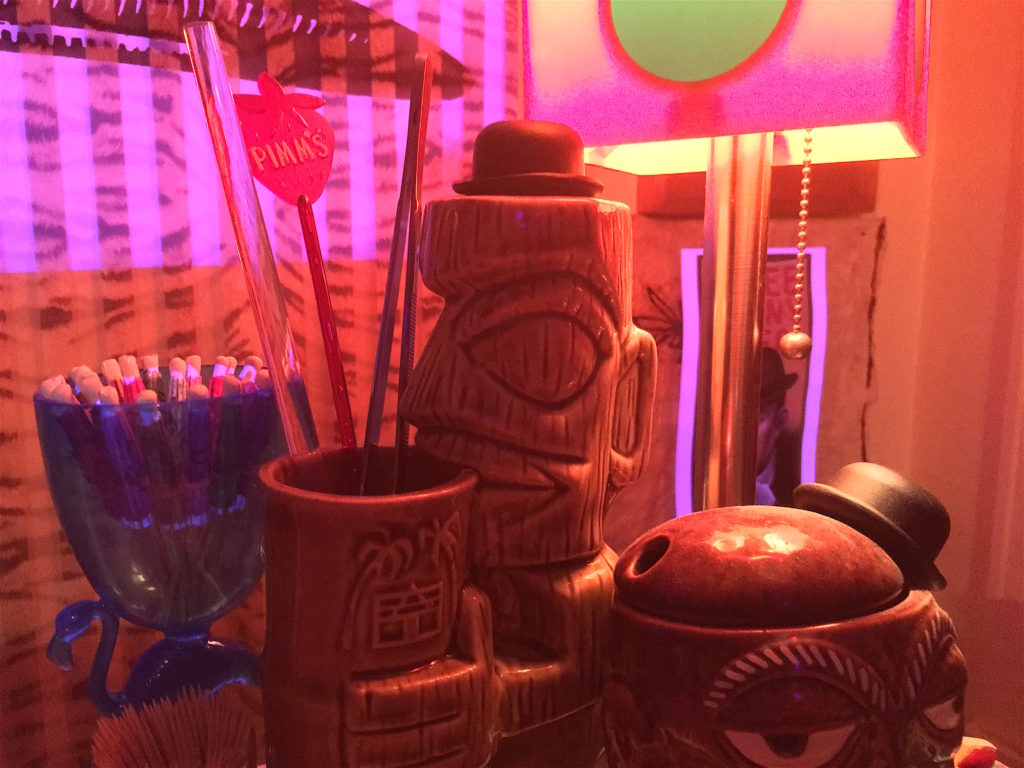
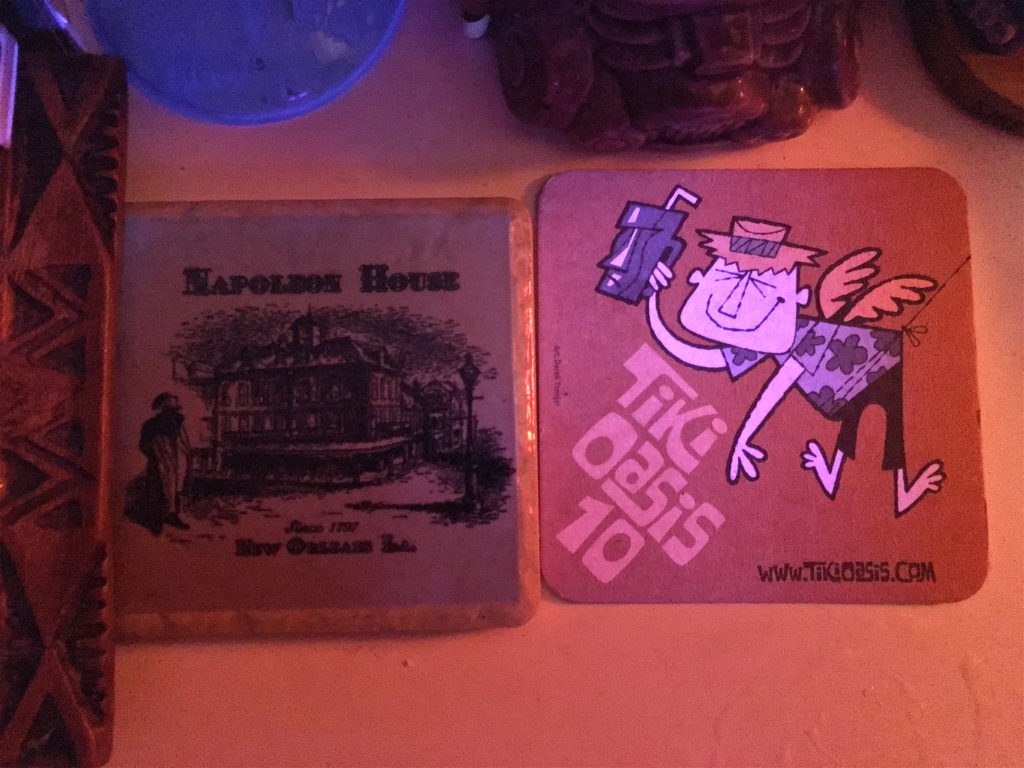
When and what made you decide to build your own bar?
Russ- I didn’t build my bar, if you mean the physical platform on which I serve my drinks. I bought it fully built at the now-defunct Deluxe Junk store in Fremont, and added various decorations to it over the years. If you mean, instead, the home bar environment known as “the Blue Flamingo Lounge”. Then, as stated above, it was to add an extra dimension to my already ongoing “theme” parties and to prevent my friends from second-guessing me as to what the next “theme” might be.
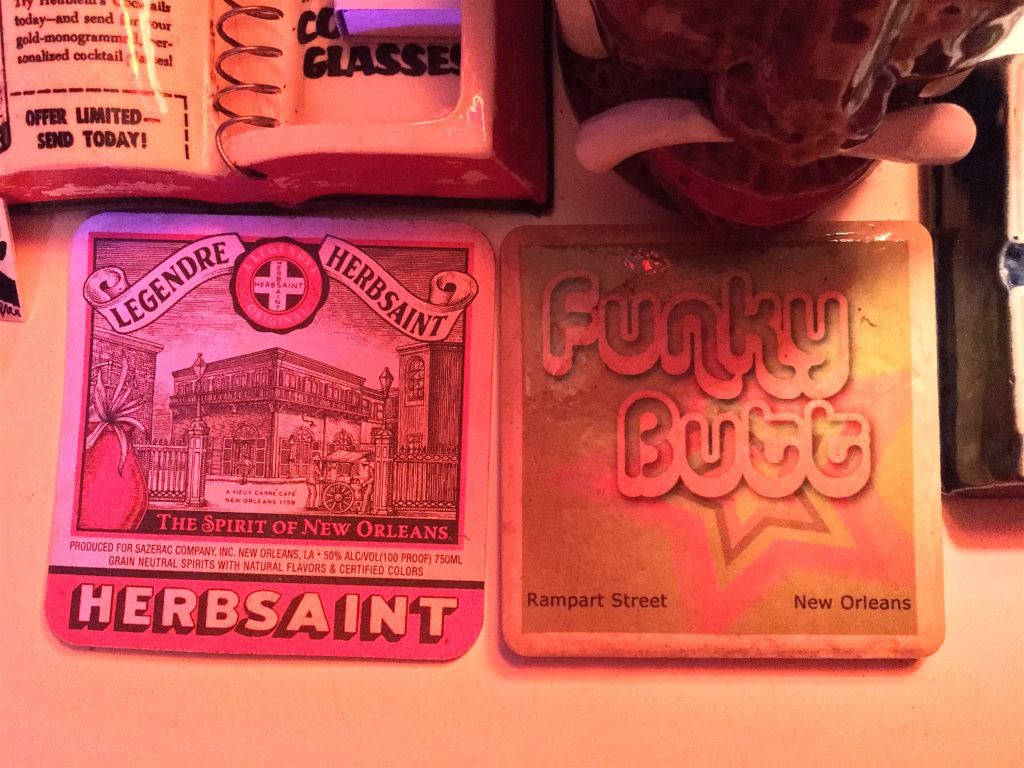
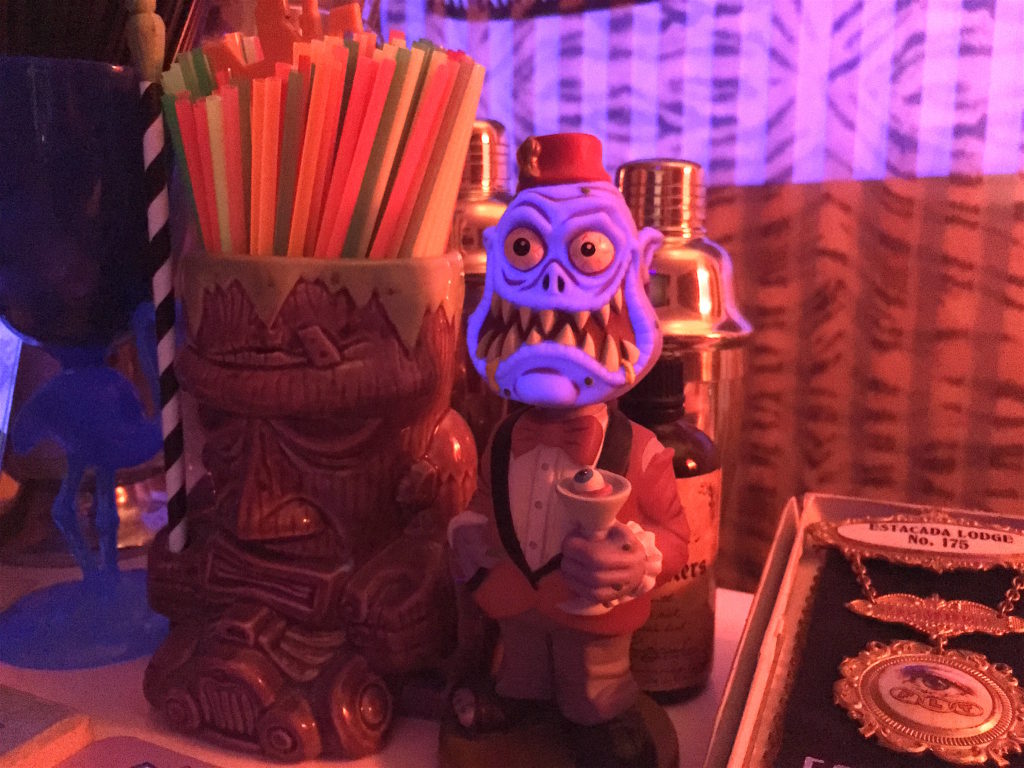
What was the first piece you bought?
Russ- The first thing I went hunting for was the bar itself, at first by going to various thrift stores (even as far away as Tacoma). Along the way, before visiting Deluxe Junk in Fremont, I no doubt purchased all kinds of glassware, lamps, fabrics, ashtrays, velvet paintings and the like. (So I don’t remember any particular “first piece”.)
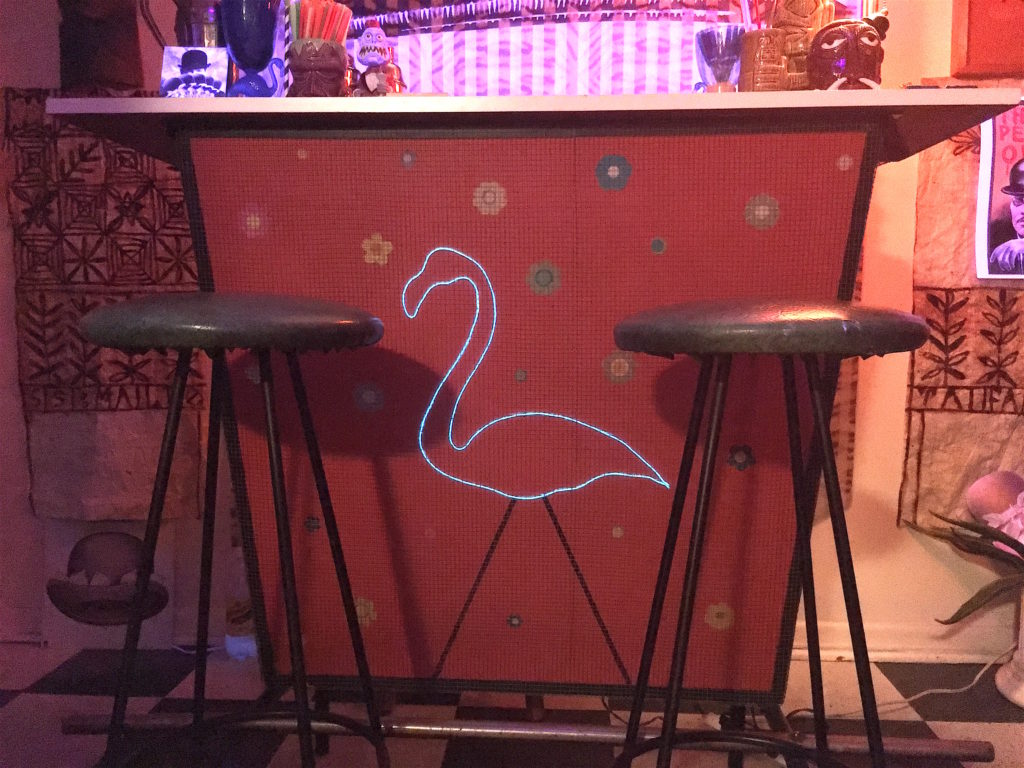
Can you give a little history of how the Blue Flamingo came together?
Russ- I’ve described some of that history already (as related to my ongoing party-hosting habits), but let me add that earlier in that same year (1993, when I started the bar), I had gone to a little tropically-themed drink den in New York’s Waldorf-Astoria Hotel, where the signature drink was called “the Blue Flamingo” (a shaken drink with vodka, blue curacao, and lemon juice). That’s where I got the name from.
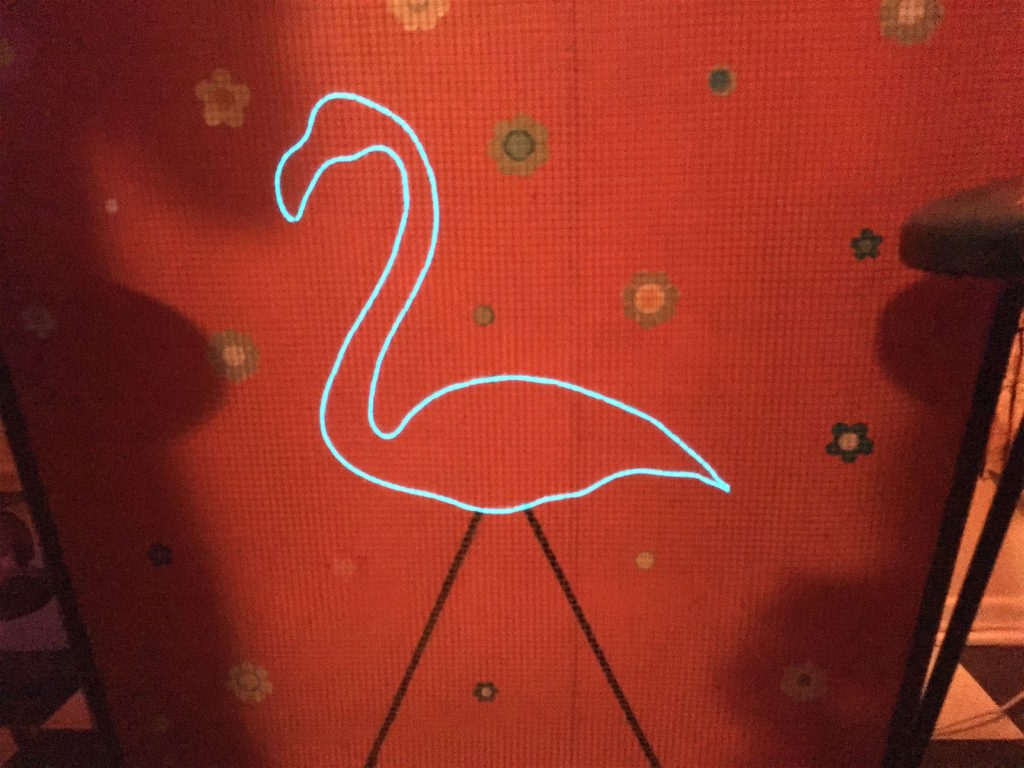
How did the Bowler Hat Club came to be?
Russ- The Bowler Hat Club is an addition to the Blue Flamingo Lounge, which came about in my current residence on Capitol Hill starting about six years ago. (Of course, a party was held to inaugurate it!) I think it relates to my own growing emphasis on fashion and dandyism, and to my somewhat frequent trips to London, where I had joined a club for dandies called The New Sheridan Club. It was in this spirit of the English gentleman’s club-that I undertook to dandify the already “American lounge bar” setting of The Blue Flamingo. Primarily this has meant the addition of various decor elements, like the big bowler hat banner in back of my bar (See photo), bowler-hatted swizzle sticks, a British flag, various bowler-hatted figures and art pieces, etc. And the Blue Flamingo had already adopted the Pimm’s Cup—a traditional British drink—as one of its signature cocktails.
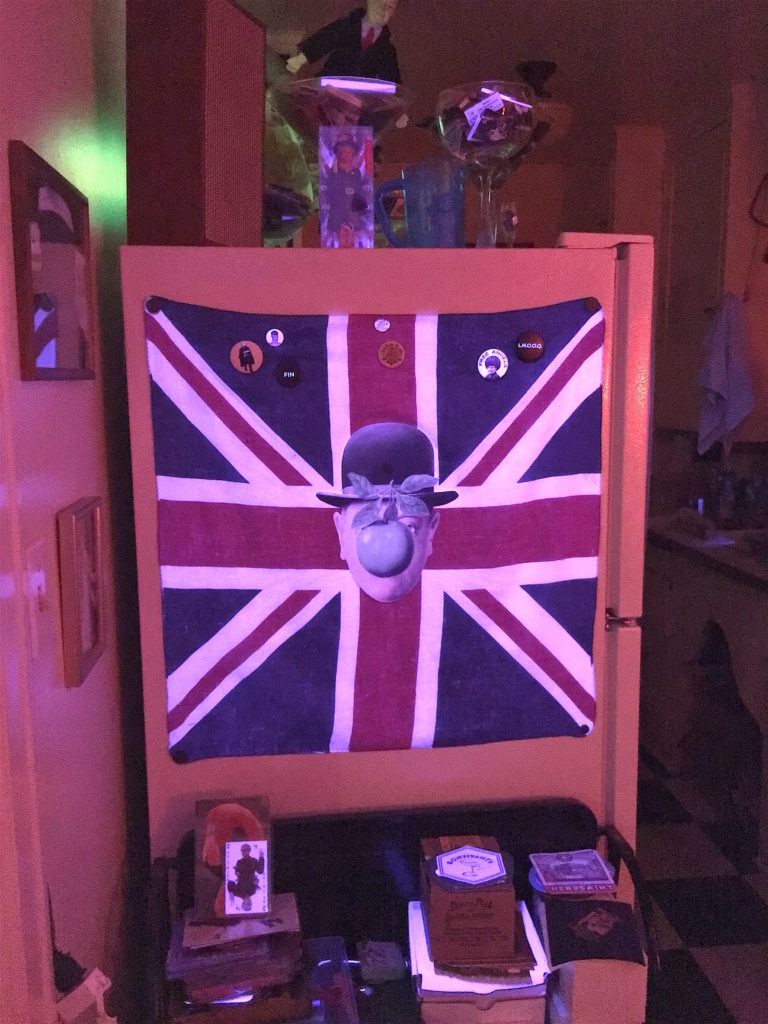
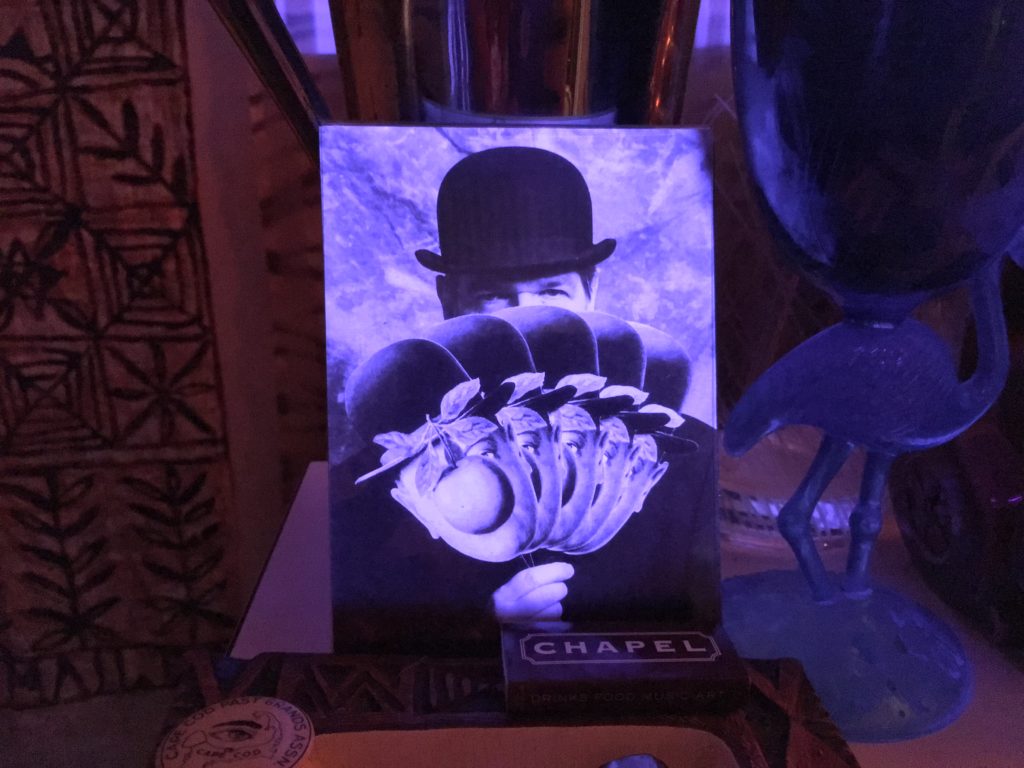
Any future plans?
Russ- My future plan is to move to Portland, OR, and to see what happens there. (I’ll be bringing my bar with me, naturally.)
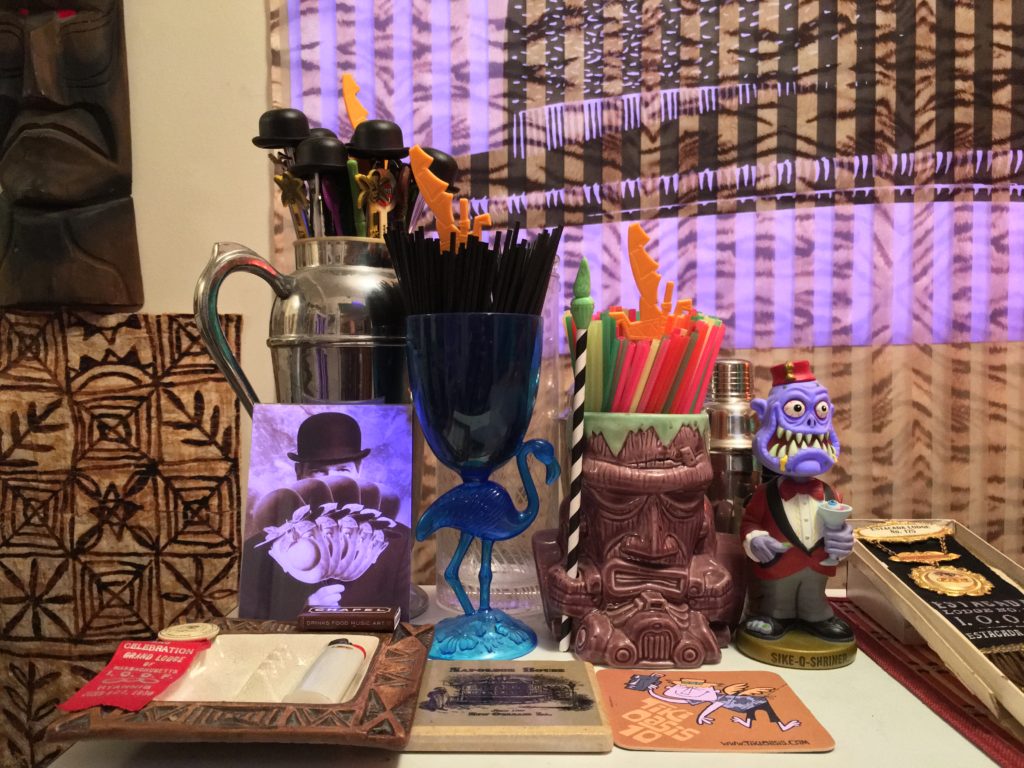
I would like to thank Yovany Camacho for his photographs used for this post!
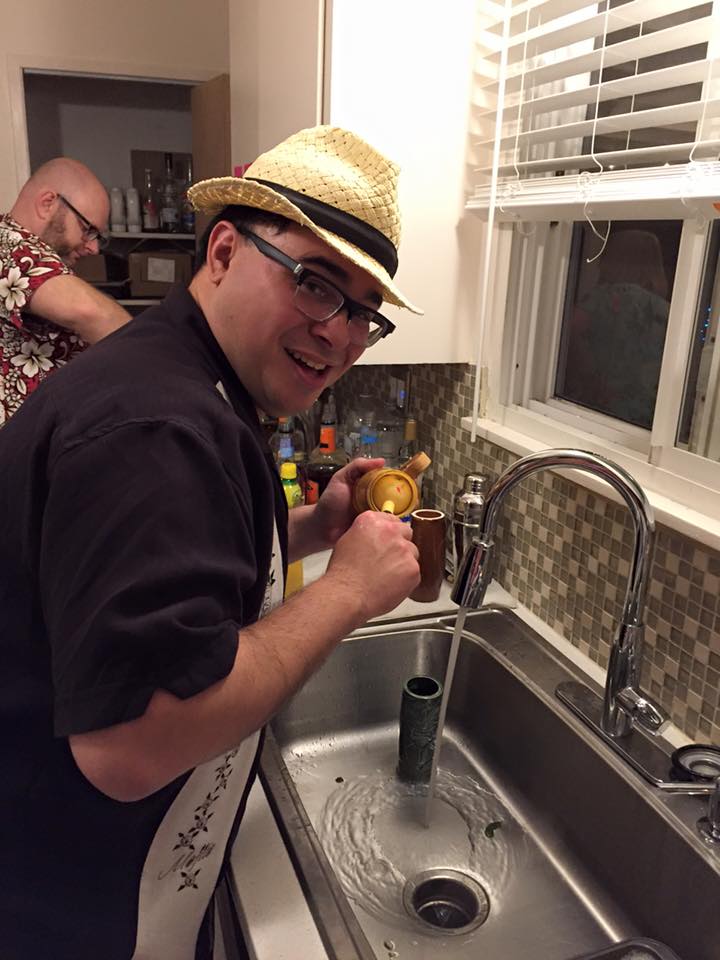
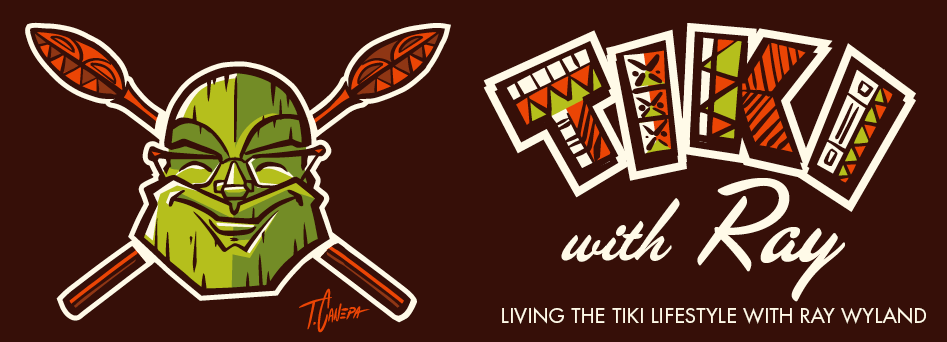
Pingback: Tiki Field Report #8 The Mai Kai Fort Lauderdale, FL 9/13/16 - Tiki with Ray